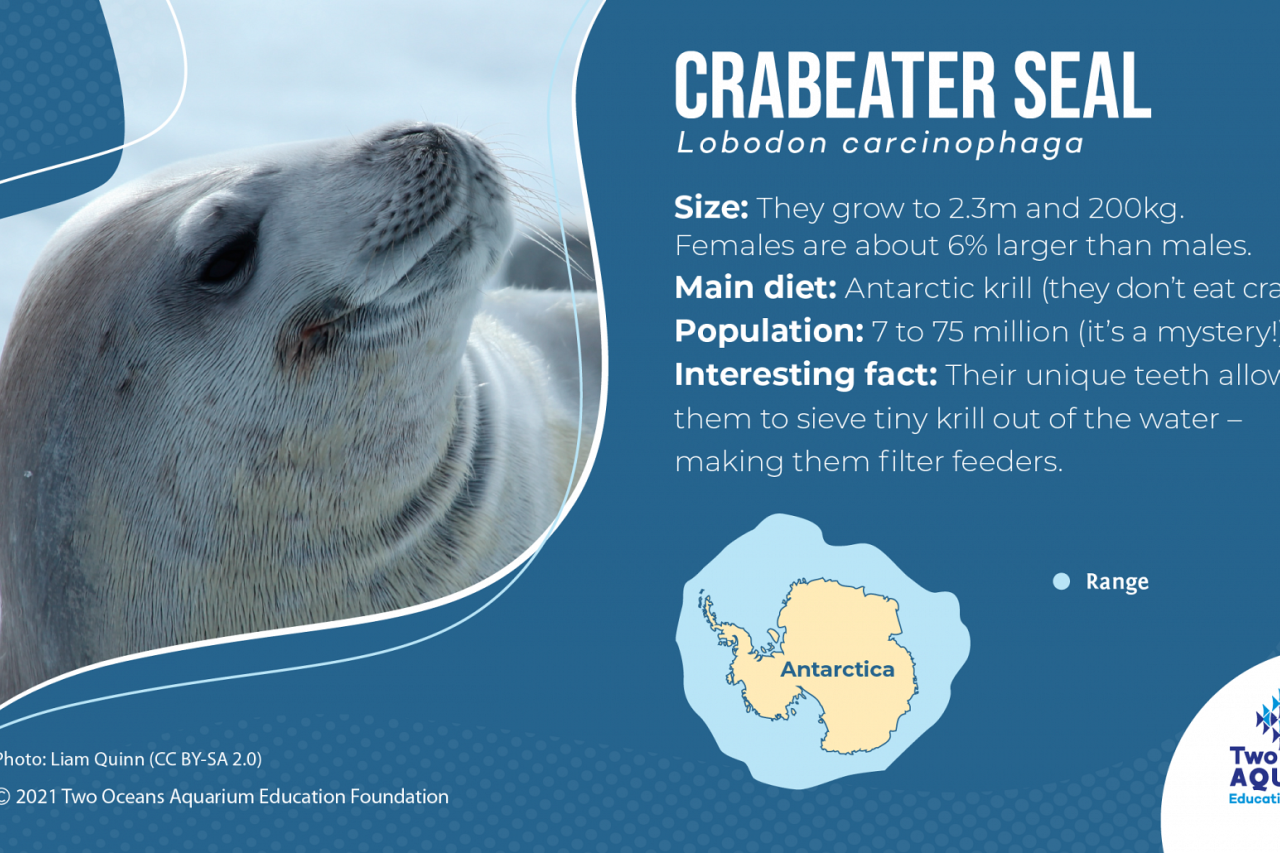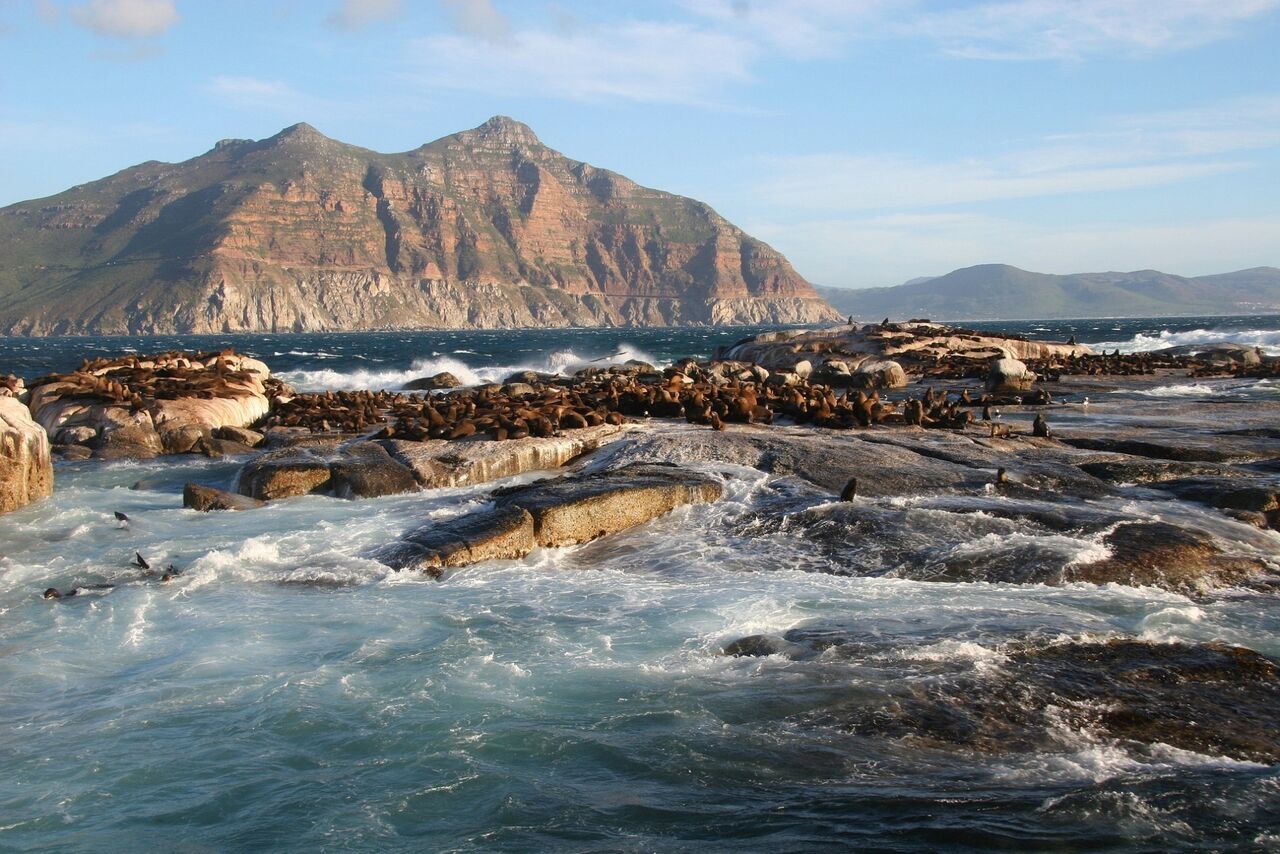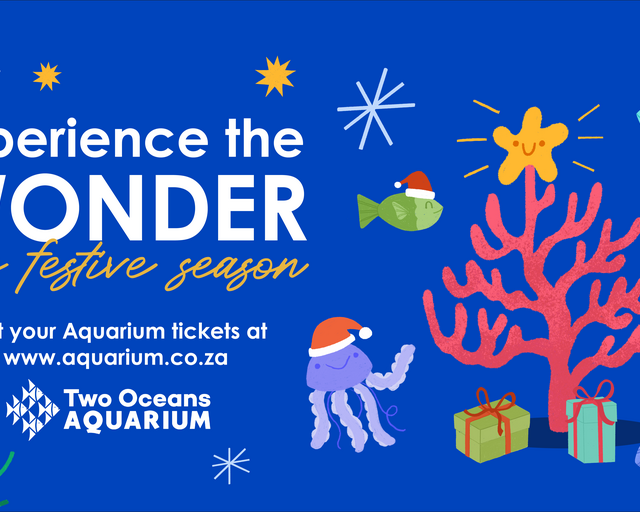Seals are a group of semiaquatic mammals that are scientifically known as "pinnipeds". Resembling, slick, flippered dogs, seals are all carnivores and spend their time at sea hunting, and their time on land caring for their young, resting, healing and moulting. Their fin-like feet that enable them to swim gracefully underwater (but does not make them as gracefully on land) set them apart from other mammals. Like many coastal countries, South Africa is home to resident seals and visitors from afar - so let's take a look at the seals you might encounter here!
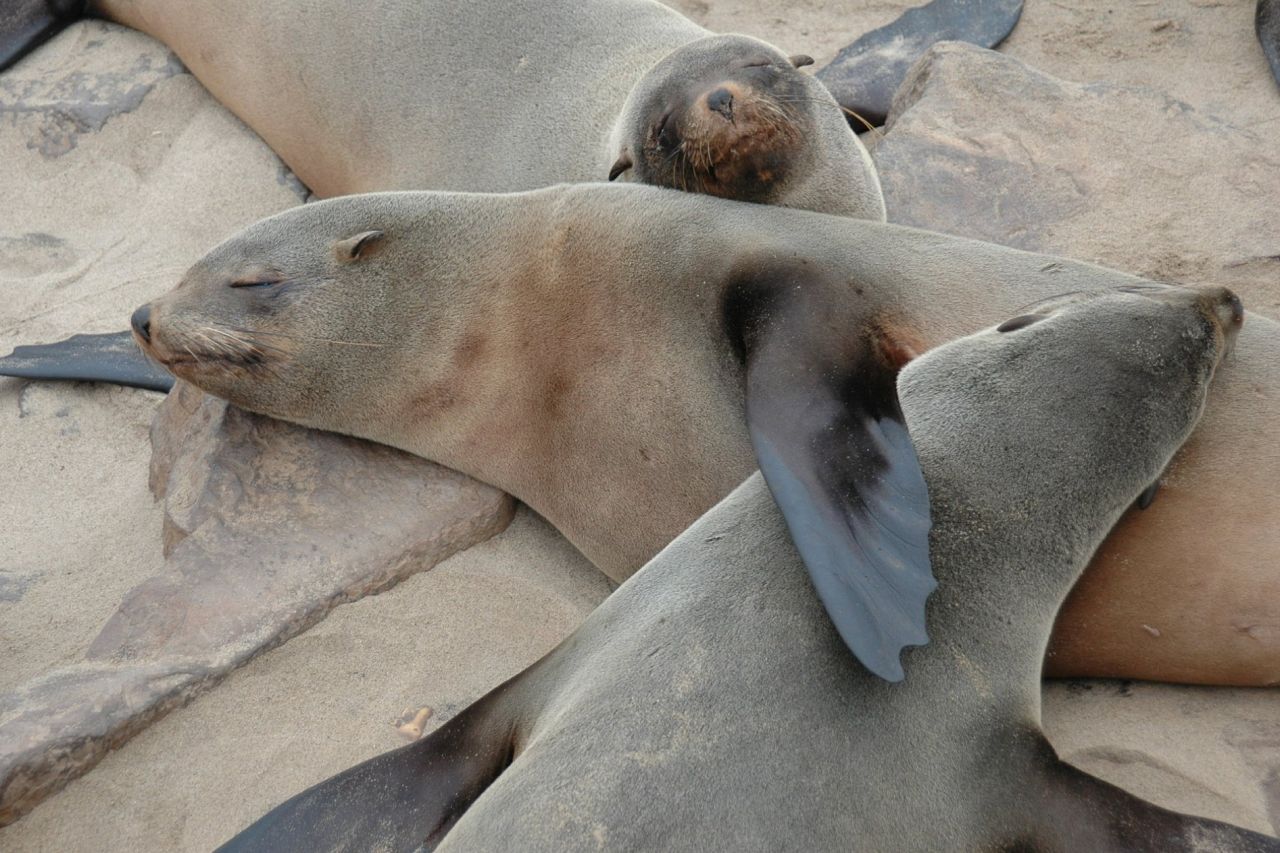
Cape fur seal
Meet the locals - our only resident seal species, the Cape fur seal! Although we usually see them in their colonies, these seals actually spend most of their lives at sea, where their large eyes, sensitive whiskers and coordinated hunting methods allow them to thrive in fish-filled waters (but, they are also smart enough to take other prey, from mantis shrimp to octopuses and birds).
They depend on the land for safe places to rest, moult, mate and raise their young - and it's here that they face most of their risks! On land, other predators like jackals can prey on them - so Cape fur seals have given up some of their long-distance swimming ability to keep the ability to run and fight on land. This is why they are not "true seals."
These seals are so special, we've dedicated a whole blog to them - here's everything you need to know about Cape fur seals.
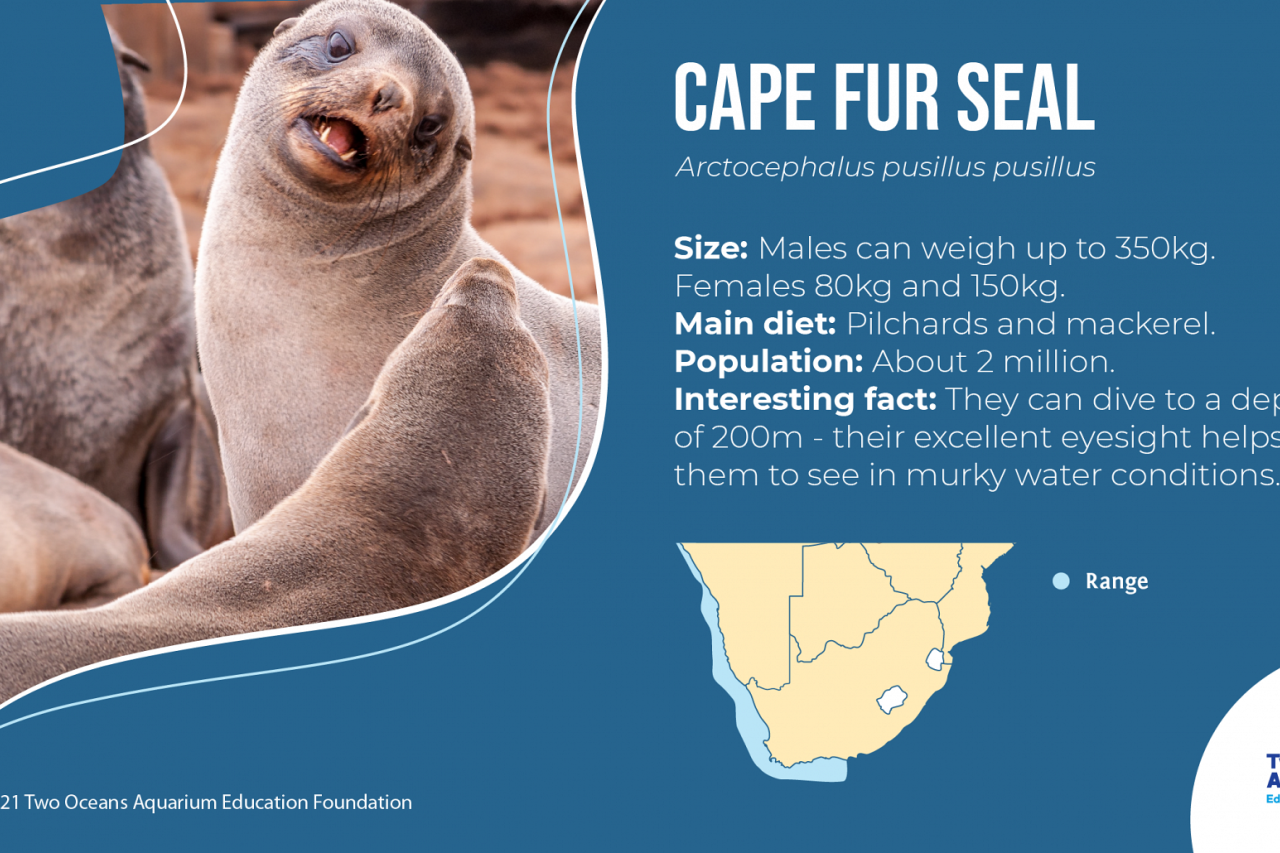
Unfortunately, dependence on land also brings these seals into contact with humans - our sheltered harbours provide ideal resting spots, but are also filled with entanglement risks. And, as with any wild animal, interaction with humans can lead to injury on both sides. This is why management of coastal wildlife is key to seal welfare and human safety.
In the V&A Waterfront, the Two Oceans Aquarium Foundation and Two Oceans Aquarium work with boat and property owners to keep an eye out for our local seals - disentangling and caring for injured ones, providing trained staff to deter seals from climbing on boats and posing a safety risk to people, and providing safe resting areas where seals can remain undisturbed out of harm's way (you can actually come say "hi" to the seals at one of these platforms behind the Aquarium).
Vagrant Seals
When we talk about "vagrancy" in terms of wildlife, we are referring to rare, natural occurrences of animals well outside their usual natural range - in the case of seals, "vagrants" are ones that visit South Africa from the waters around Antarctica. Vagrant animals are very rare, and should not be confused with visiting animals (like green turtles that commonly pass South Africa even if they don't stop here) and invasive or alien species that are introduced by humans and become established.
Southern elephant seal
Southern elephant seals are the largest species of seal, growing to almost 7m long and weighing over 6 tonnes (that's almost 10 adult polar bears)! In fact, other than some whales, they are the largest mammal!
These squid hunters undertake migrations between Antarctica and various southern islands, like the Marion Islands, to breed and moult, and every so often we see one swimming all the way to the South African mainland to moult on one of our beaches - like "Buffel", a regular visitor, or "Glen" that visited Mossel Bay last year.
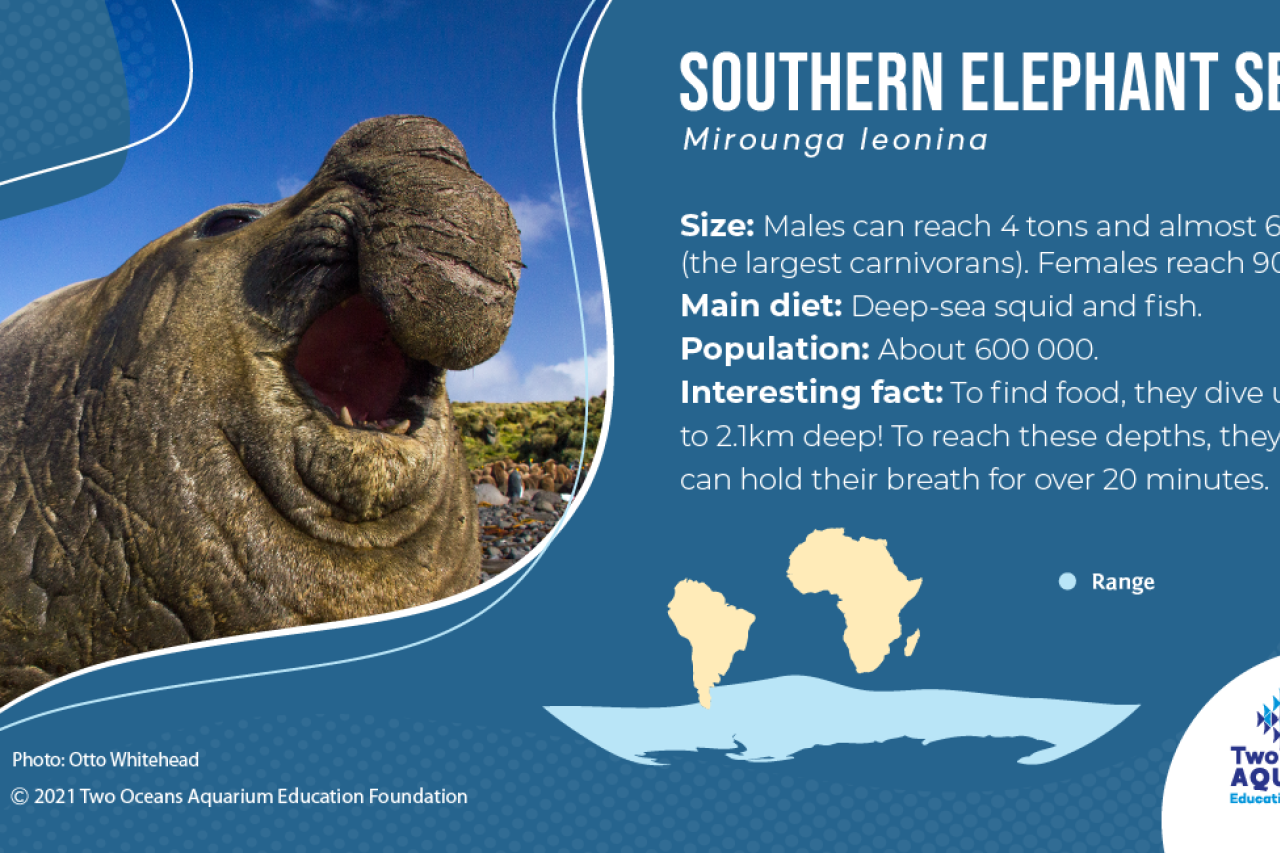
Elephant seals get their name from their unique noses - males have an enlarged proboscis that enables them to "roar" loudly, a way they mark their territory and attract mates. Although they live solitary lives at sea, many southern elephant seals return to land to mate - with males fighting it out for dominance while females care for their young.
They also have unique evolutionary mechanisms that enable them to dive for a very long time and to great depths, without getting decompression sickness, allowing them to dive to depths of over 2km for more than 20min to find prey. This is actually deeper than most whales!
Subantarctic fur seal
Breeding on small islands, like Marion Island, the Subantarctic fur seal is a regular visitor to the South African mainland. They are significantly smaller than our local Cape fur seals, with the males only growing to 150kg, and females to 50kg.
They are similar in behaviour and appearance to the closely related Antarctic fur seal, which lives a bit further south, and is thus rarer to see in South Africa. Both these seals, are well adapted for live in large colonies on rocky islands and shorelines.
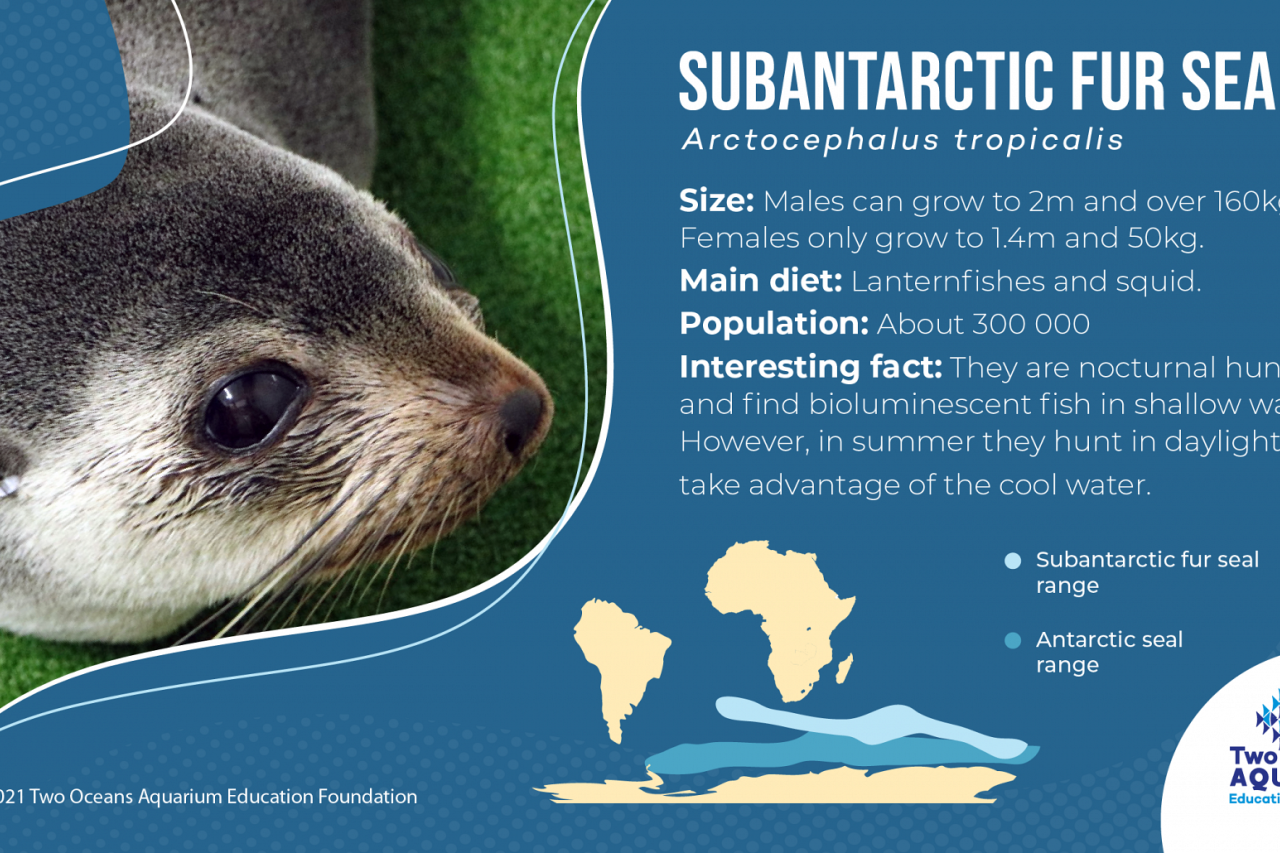
Subantarctic fur seals are nocturnal hunters, and hunt for bioluminescent fish that emit lights in shallow water. However, in summer when it is very hot on their islands, they will hunt during the daytime to cool off in the water - something that is becoming more common due to climate change (and which is, unfortunately, a bit less efficient).
Be sure to look at the story of Daisy, a Subantarctic seal we helped rescue at the Two Oceans Aquarium in 2020.
Leopard seal
Although not a native to the South African coast, leopard seals do show up on our beaches from time to time. These "visitor" or "vagrant" animals are typically at home amongst the floating sea ice of Antarctica, so what brings them here?
Leopard seals are Antarctica's second most successful predator - only narrowly losing out to orcas. As juveniles, they use narrow teeth to filter feed on tiny crustaceans called krill, but as they get older they become apex predators and can prey on almost any animal they encounter - penguin, sharks, and even other seals.
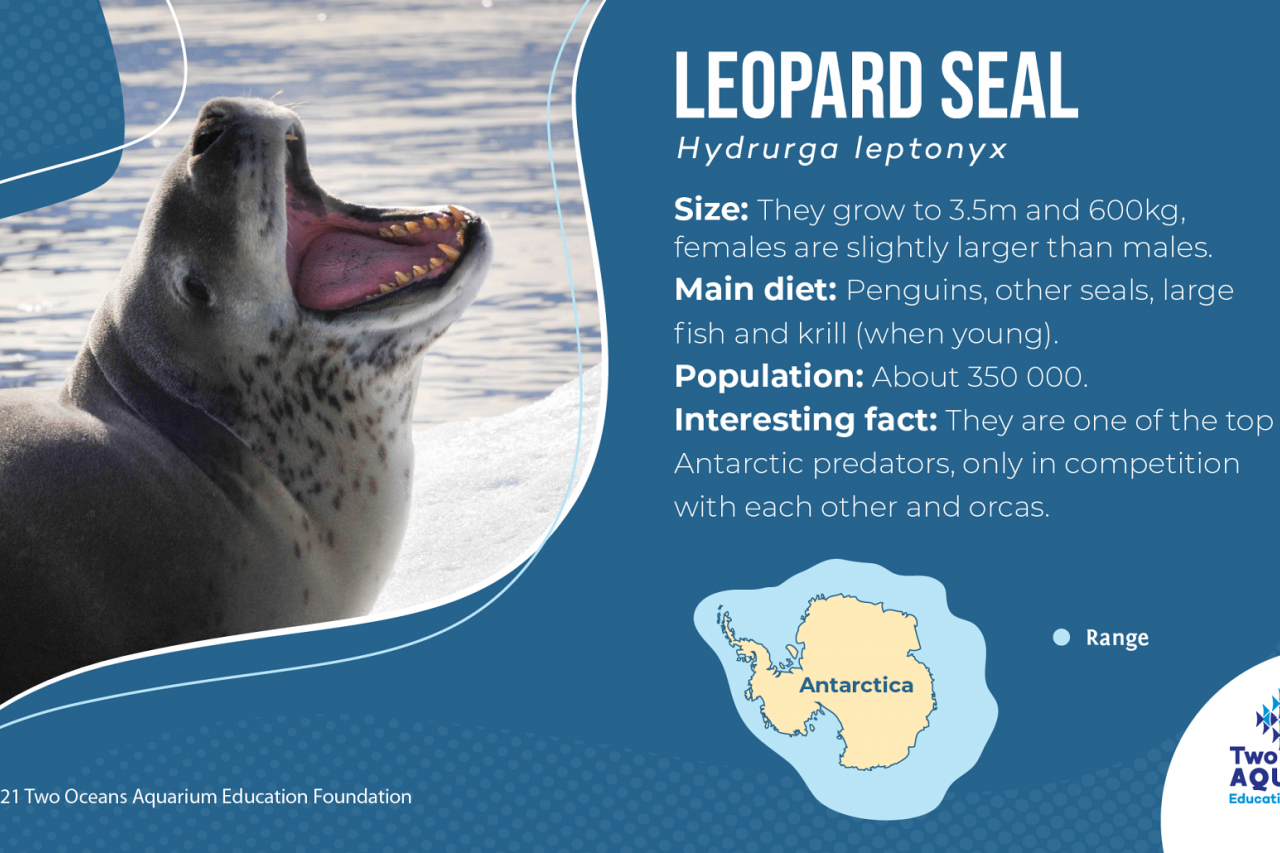
They are "true seals" meaning they are adapted for longer, more efficient ocean journeys than our local Cape fur seals. Growing up to 600kg, leopard seals are almost constantly on the hunt and typically only crawl out onto the ice or onto small islands like Marion when it is time to moult (grow new fur), give birth, or mate. It's a busy life being a predator!
So why do they come to South Africa? Juvenile leopard seals, particularly males, range further from Antarctica than fully grown adults - they lack the size and strength to compete with the adults or to take on large coastal prey. Unfortunately, this journey means they sometimes get lost while trying to find Subantarctic Islands to moult and rest on, and end up in destinations that are quite far out of their normal range - with South Africa being a very rare stopping point indeed (fewer than 20 have ever been sighted on our coast).
Crabeater seal
Despite their name, these small Antarctic true seals do not eat crabs - they feed almost exclusively on krill. Krill are tiny shrimp-like animals that form huge swarms in the water of the Southern Ocean, and crabeater seals use specially adapted teeth to filter them out of the water.
Crabeaters do not live on the Antarctic mainland and do not form colonies like our local Cape fur seals. Instead, they live on fragments of floating sea ice, where females give birth and care for their young. This dependence on sea ice means that young crabeaters on the edges of their range sometimes fail to find ice, and accidentally end up on the coasts of South Africa, Australia, New Zealand and even Brazil!
Something you may find surprising, as you likely haven't heard of crabeater seals before, is that it is believed that they are the most abundant seal species in the world - possibly with as many as 75 million individuals (it's difficult to count them because of their lack of colonies).
Despite their abundance, it is very rare for us to spot them in South African coastal waters - only 32 have ever been found on our shores. That's why it was so surprising when two were found on our coast on the same day on 28 January 2021 - probably both washed here by the same event.
